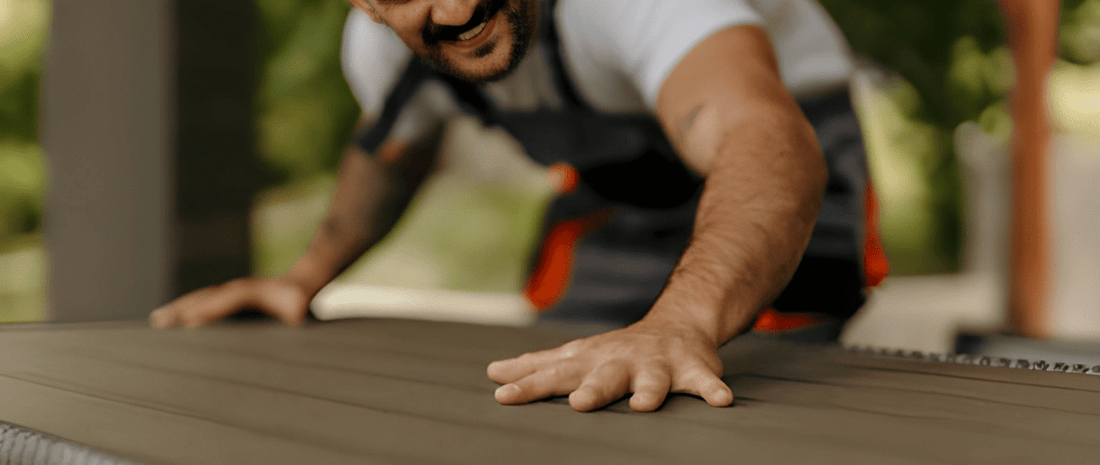
Best Material for Outdoor Furniture: A Complete Comparison
Share
When shopping for outdoor furniture, the material determines how long it lasts and how much maintenance it needs. Different materials handle rain, sun, and humidity differently, so understanding your options helps you make the right choice.
Wood remains the most popular outdoor furniture material, accounting for over 40% of the market, but metal, synthetic, and composite options each have distinct advantages. This guide compares the most common materials so you can find what works best for your space and climate.
What Makes a Good Outdoor Furniture Material?
Your Climate
Consider what weather your furniture will face. Coastal areas need rust-resistant materials. Hot, sunny regions require fade-resistant options. Snowy climates demand materials that handle freezing temperatures and moisture.
Maintenance
Some materials need annual sealing. Others just need occasional cleaning. Think about how much time you want to spend on upkeep.
Location
Furniture under a covered porch has different needs than pieces sitting in full sun and rain. Your available protection matters.
Budget
Look at long-term value, not just upfront cost. A material that lasts 20 years costs less over time than replacing cheaper furniture every few years. Making smart decisions, such as buying at the right time and availing end-of-season sales, can help you get high-quality pieces at a lower cost.
Most Popular Outdoor Furniture Materials
Let's explore each material in detail to see how it performs.
Cedar
Cedar's natural properties make it one of the best wood types for outdoor furniture; It repels moisture and insects without the need for chemical treatment and resists decay.
Being strong and light at the same time makes it durable for everyday use and convenient to move around. It also doesn't absorb heat like metals do, making it comfortable for hot weather. If you want to preserve its warm honey tone, you have to clear seal it once a year. It will naturally soften to silver-gray over time.
Why cedar works outdoors:
- Naturally, weather and insect repellent.
- Lightweight but durable
- Stays cool in the sun
- Ages gracefully
- North American-sourced and affordable
Cedar is perfect for covered porches, decks, and garden furniture. It adds a natural charm without the rust issues of metal or the exorbitant cost of tropical hardwoods.
Maintenance: Clean with mild soap and water annually; seal yearly to maintain color or let it gray naturally.
Lifespan: 15–20+ years (longer with protection)
Best For: Porches, decks, benches, picnic tables, and anyone who loves natural wood with easy upkeep.
Teak
Teak is a tropical hardwood known for lasting decades outdoors. The wood contains natural oils that resist water and rot. It’s heavy, stable and handles all climates well.
Teak's density makes moving it difficult. Over time it turns a weathered gray, though it can be oiled to stay golden. The primary drawback with teak is cost; it is usually 3-4 times the price of cedar.
-
Maintenance: Teak has a maintenance of very low maintenance. Optional oil for color.
-
Lifespan: 25-50+ years
-
Best for: Exposed patios, coastal areas, premium outdoor dining sets.
Aluminum
Aluminum won't rust and needs minimal care. It's lightweight and easy to rearrange. Modern powder-coated finishes offer many color options and hold up well outdoors.
Aluminum dents and scratches more easily than wood or heavier metals. It gets hot in direct sun and usually needs cushions for comfort.
- Rust-proof
- Very lightweight
- Low maintenance
- Contemporary styling
Maintenance: Wash with soap and water.
Lifespan: 15–20 years
Best For: Modern designs, pool areas, and anyone wanting no-maintenance furniture
Steel and Wrought Iron
Steel provides traditional styling with substantial weight. The heaviness adds stability, and wrought iron allows for decorative details.
The concern is rust. Powder coating protects the metal, but chips expose it to moisture. Regular maintenance keeps it looking good.
- Heavy and wind-resistant
- Traditional garden appearance
- Requires rust prevention
- Better for dry climates
Maintenance: Check for rust annually, touch up coating.
Lifespan: 10–25 years with care
Best For: Traditional gardens, covered areas, dry climates
All-Weather Wicker
Synthetic wicker mimics natural wicker but handles weather. Quality versions resist UV rays and moisture. It's woven over aluminum or steel frames.
Make sure you're getting synthetic, not natural wicker. Natural wicker falls apart outdoors. Quality varies; look for thick strands and solid frames.
- Weather-resistant synthetic
- Lightweight
- Casual appearance
- Quality varies by brand
Maintenance: Clean with soap and water.
Lifespan: 7–15 years depending on quality
Best For: Covered patios, casual seating
HDPE Poly Lumber
HDPE furniture uses recycled plastic. It won't crack, rot, or fade much. You can leave it outside year-round in any weather. Recent tests show quality HDPE furniture can last over 15 years with minimal color change.
The material is heavy and looks like plastic. It's extremely durable but may not suit every style.
- Made from recycled materials
- Handles all weather
- No maintenance needed
- Heavy weight
Maintenance: None, just rinse.
Lifespan: 20+ years
Best For: Coastal areas, pool furniture, high-exposure spots
Eucalyptus
Eucalyptus is a fast-growing hardwood that costs less than teak. It has some weather resistance but needs sealing each year to prevent weathering and cracking.
It sits in a bridge position in value relative to premium hardwood options like teak, and more budget-friendly options like cedar.
- Hardwood at moderate cost
- Similar look to teak
- Requires yearly sealing
Maintenance: Apply sealant yearly.
Lifespan: 10–15 years with care
Best For: Protected patios, budget-conscious buyers wanting hardwood.
Material Performance at a Glance
Here's how these materials compare side by side.
|
Material |
Weather Resistance |
Maintenance |
Weight |
Price |
Lifespan |
|
Cedar |
Very Good |
Low-Moderate |
Light |
$ |
15–20+ years |
|
Teak |
Excellent |
Low |
Heavy |
$$ |
25–50+ years |
|
Aluminum |
Excellent |
Very Low |
Light |
$ |
15–20 years |
|
Steel/Iron |
Good (coated) |
Moderate-High |
Heavy |
$–$$ |
10–25 years |
|
All-Weather Wicker |
Very Good |
Low |
Light-Medium |
$–$$ |
7–15 years |
|
HDPE Poly |
Excellent |
None |
Heavy |
$–$$ |
20+ years |
|
Eucalyptus |
Good |
Moderate |
Medium |
$ |
10–15 years |
Choosing Materials Based on Your Climate
|
Climate |
Best Choices |
Avoid |
Key Issue |
|
Hot & Dry |
Cedar, aluminum, HDPE, wicker |
Dark metals, unsealed wood |
UV damage and heat |
|
Hot & Humid |
Teak, aluminum, HDPE, sealed cedar |
Unsealed wood, standard steel |
Mold and moisture |
|
Coastal |
Teak, aluminum, HDPE |
Standard steel, iron |
Salt corrosion |
|
Cold & Snowy |
Cedar, HDPE, aluminum, teak |
Brittle plastics, unsealed wood |
Freeze-thaw cycles |
|
Moderate |
Cedar, aluminum, wicker, eucalyptus |
Natural wicker |
General exposure |
What About Outdoor Cushions and Fabrics?
-
Solution-Dyed Acrylic (Sunbrella): Premium outdoor fabric. Resists fading and water. Lasts 5–7 years with proper care.
-
Olefin/Polypropylene: Mid-range option. Resists mildew. Some fading with sun exposure. Lasts 3–5 years.
- Polyester: Budget choice. Fades faster than other options. Best for covered areas. Lasts 2–4 years.
Store cushions during harsh weather to extend their life.
Selecting the Right Material for Your Outdoor Space
Outdoor furniture like yard swings for adults, lounge chairs, and benches makes your decks, porches, and gardens more inviting while the right material ensures durability and easy maintenance.
-
Covered Porch or Deck: Cedar works well here. The cover protects from heavy weather while cedar handles normal moisture. Pair with quality outdoor cushions for comfort.
-
Exposed Patio: Teak or HDPE handle year-round exposure. Teak offers a classic appearance. HDPE needs zero maintenance.
-
Modern Space: Aluminum creates clean lines with minimal upkeep.
-
Traditional Garden: Cedar provides natural appeal without rust concerns. Wrought iron works if you maintain the coating.
-
Coastal Property: Use teak, aluminum, or HDPE. Avoid standard steel. Rinse furniture regularly to remove salt.
- Budget-Focused: Cedar offers good quality at a reasonable cost. Aluminum provides value with less maintenance.
Tips for Making Your Outdoor Furniture Last Longer
These simple practices will extend the life of your outdoor furniture no matter the material.
- Cover your furniture when not in use
- Clean with the right products
- Tighten the hardware once a year
- Apply necessary finishes when due
- Provide shade for your furniture
- Stre cushions indoors
- Repair damage promptly
Finding the Best Material for Your Needs
Think about your rainfall, the sun, your level of maintenance, and your climate. For most situations, cedar strikes a practical balance among appearance, cost, and weather resistance. It works particularly well in covered and partially covered spaces where you want natural wood character.
Teak offers maximum durability if the budget allows. Aluminum works well for modern styles with no maintenance. HDPE handles severe weather without any care.
Match the material to your conditions and you'll have furniture that serves you well for many years. Cedar Creek Furniture offers handcrafted outdoor pieces built with quality materials and traditional craftsmanship.
